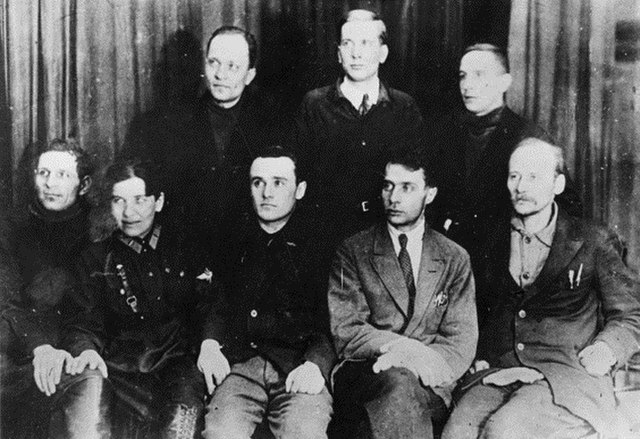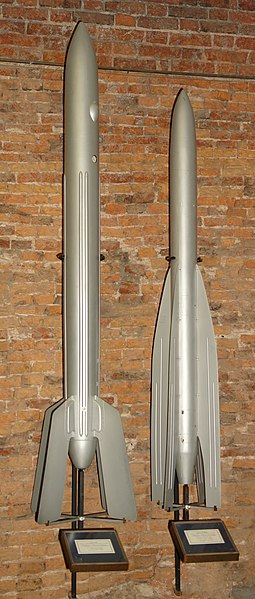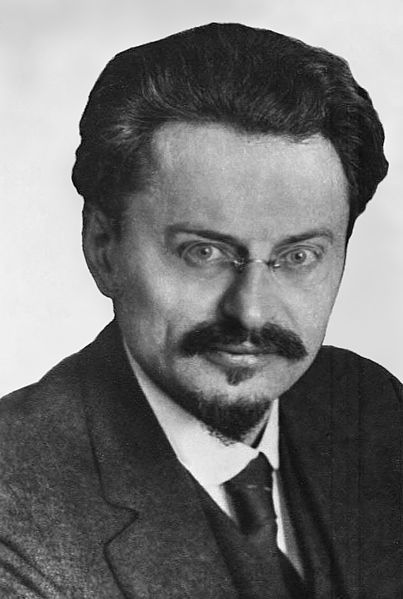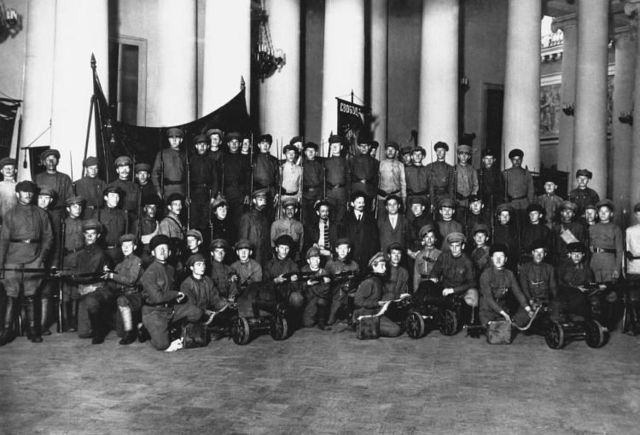The Soviet space program was the national space program of the Union of Soviet Socialist Republics (USSR), active from 1955 until the dissolution of the Soviet Union in 1991.
Soviet cosmonaut Yuri Gagarin—the first man in the outer space.
Members of the Group for the Study of Reactive Motion (GIRD). 1931. Left to right: standing I.P. Fortikov, Yu A Pobedonostsev, Zabotin; sitting: A. Levitsky, Nadezhda Sumarokova, Sergei Korolev, Boris Cheranovsky, Friedrich Zander
Rocket 09 (left) and 10 (GIRD-09 and GIRD-X). Museum of Cosmonautics and Rocket Technology; St. Petersburg.
Chief Designer Sergei Korolev (left), with the father of the Soviet atomic bomb Igor Kurchatov, and Chief Theoretician Mstislav Keldysh in 1956
The Union of Soviet Socialist Republics (USSR), commonly known as the Soviet Union, was a transcontinental country that spanned much of Eurasia from 1922 to 1991. It was the largest country in the world by area, extending across eleven time zones and sharing land borders with twelve countries. A successor state to the Russian Empire, the country was nominally organized as a federal union of fifteen national republics, the largest and most populous of which was the Russian SFSR; in practice both its government and economy were highly centralized until its final years. It was the world's third-most populous country and Europe's most populous country. As a one-party state governed by the Communist Party of the Soviet Union, it was a flagship communist state. Its capital as well its largest city was Moscow. Other highly urbanized centers were Leningrad, Kiev, Tashkent and Baku.
Vladimir Lenin, founder of the Soviet Union and the leader of the Bolsheviks
Leon Trotsky, founder of the Red Army and a key figure in the October Revolution
Lenin, Trotsky and Kamenev celebrating the second anniversary of the October Revolution
Dissolution of the elected Russian Constituent Assembly by the Bolsheviks on 6 January 1918








